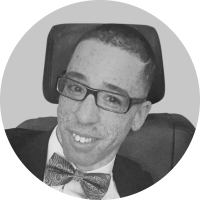Real Inclusion: Why Leaders Must Actively Advocate for Disability

Real Inclusion: Why Leaders Must Actively Advocate for Disability
Leaders are often good at anticipating the needs of their employees and members, but what happens when those needs are not immediately obvious? A recent article highlights how people with disabilities—both visible and not—often face significant challenges that require closer attention.
The article shares a powerful story from leadership expert Ludmila N. Praslova, who is autistic. She describes the stress of navigating workplaces that can be unaccommodating or even hostile. She has had to turn down great job offers due to sensory issues like noise and lighting. When she has disclosed her needs, she has faced everything from indifference to outright cruelty. This story is a stark reminder of the unseen stress that organizational policies can create.
Disability advocate Keely Cat-Wells emphasizes that accessibility and inclusion can't be an afterthought. She states that leaders need to "embed accessibility and disability inclusion into the DNA of their organization." This means creating accessible hiring processes, providing training to break down attitudinal barriers, and holding everyone accountable with measurable goals. Retention comes from listening to what disabled employees need, whether that's flexible work or access to assistive technology.
The central message for leaders is to prioritize the voices of people with disabilities from the very beginning. As Cat-Wells puts it, "Nothing without us." This is a powerful idea, but it's also a natural extension of what good leaders already do: understand their audience's needs and design solutions that work for everyone. When leaders actively listen to these voices, they can build truly inclusive policies and programs.
You can read the original article here: How Leaders Can Advocate Around Disability.
What are some ways you have seen leaders effectively include the voices of people with disabilities in decision-making?
Categories
- All Categories
- What is Research at Open like?
- 2 What would you like to research?
- How can Open improve our community research?
- 16 Open Community (Open to All)
- 7 Welcome and Introductions
- 6 Coffee Lounge
- 1 Competitions and special offers
- 1 Open Community Help and Support
- My Community Groups
- 429 My Life's Discussions
- 42 Workplace and Employment
- 42 Education and Skills Development
- 29 Entertainment At Home
- 24 Entertainment Out and About
- 47 Travel and Transport
- 15 Built Environment - Access to Buildings and Urban Spaces
- 22 Fitness, Sports and Adventure
- 9 Cooking, Eating and Nutrition
- 13 Arts, Music and Crafts
- 22 Fashion and Beauty
- 22 Home and Daily Basics
- 6 Relationships and Sex
- 34 News and Current Affairs
- 10 Banking and Finance
- 24 Policy and Legislation
- 30 Healthcare
- 13 Shopping
- 5 Housing
- 7 Suggest a new discussion
- Education and Training Opportunities